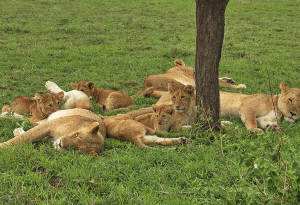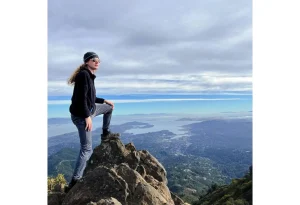Best Time to Visit Rwanda and Uganda for a Combined Safari
Overview
Best Time to Visit Rwanda and Uganda for a Combined Safari. Timing is crucial when planning a safari, especially when visiting diverse ecosystems like those in Rwanda and Uganda. The right time can enhance your experience, from witnessing the Great Migration in the Serengeti to tracking mountain gorillas in the misty forests. In this post, we’ll explore the best times to visit Rwanda and Uganda, focusing on how weather and seasons affect wildlife viewing and overall safari experiences.
Dry Season (June to September and December to February)
The dry season is generally considered the best time for a combined Rwanda-Uganda safari. During these months, the weather is more predictable, and wildlife viewing is at its peak.
Rwanda
-
- Weather: Rwanda’s dry season offers clear skies and comfortable temperatures, making it ideal for outdoor activities. With lower humidity and less rain, the trekking conditions in Volcanoes National Park are excellent, and the risk of muddy trails is minimized.
- Wildlife Viewing: The dry season also enhances wildlife visibility in Akagera National Park, as animals congregate around the remaining water sources, making game drives more fruitful.
- Gorilla Trekking: “The dry season in Rwanda provides excellent conditions for gorilla trekking, with less muddy trails and better visibility of wildlife around the few remaining water sources.”
-
Uganda
- Weather: Uganda’s dry season brings sunny days and cooler nights, perfect for game drives and boat safaris in its national parks.
- Wildlife Viewing: Wildlife is easier to spot during the dry season in parks like Queen Elizabeth and Murchison Falls, where animals gather around waterholes.
Wet Season (March to May and October to November)
While the wet season may deter some travelers due to the increased rainfall, it has its own unique appeal, particularly for those seeking a quieter experience and lush landscapes.
Rwanda
-
- Weather: The wet season in Rwanda brings frequent rain showers, which can make trekking more challenging. However, the rainfall also transforms the landscape into a verdant paradise, with flourishing vegetation and vibrant greenery.
- Wildlife Viewing: Although animals are more dispersed, the wet season is an excellent time for birdwatching, as migratory birds arrive and the lush environment attracts a variety of species.
- Gorilla Trekking: “The wet season brings lush greenery to Rwanda, creating beautiful, vibrant landscapes. While trekking can be more challenging due to muddy trails, it’s an excellent time for birdwatching.”
Uganda
-
- Weather: Uganda’s wet season is marked by heavy downpours, often in the afternoon, leading to slippery roads and trails. Despite this, the rain revitalizes the landscape, resulting in stunning scenery.
- Wildlife Viewing: The wet season sees fewer tourists, offering a more private experience in the parks. Additionally, the season is prime for birdwatching, with numerous migratory species gracing the parks.
- Bird watching: “In Uganda, the wet season means fewer crowds and lush scenery, though rain can affect travel plans. It’s a great time for birdwatchers, with many migratory species arriving during this period.”
Gorilla Trekking:
Gorilla trekking is the highlight of any Rwanda-Uganda safari, and timing your trek is crucial for the best experience.
Rwanda
Gorilla trekking is most popular during the dry season when the trails are easier to navigate, and visibility is better. However, permits are in high demand during this period, so booking well in advance is essential.
Uganda
Uganda’s Bwindi Impenetrable Forest offers a more challenging trekking experience, especially during the wet season. The advantage of trekking during this time is fewer tourists and potentially more flexible permit availability.
Special Events and Festivals:
Timing your visit to coincide with local festivals and events can add a rich cultural dimension to your safari.
Rwanda:
Events like the Kwita Izina ceremony, which celebrates new gorilla births, are significant cultural occasions that attract visitors worldwide. These events not only provide insight into local traditions but also underscore the importance of conservation efforts.
Uganda
Uganda’s Martyrs’ Day, celebrated on June 3rd, is a major event, especially for those interested in the country’s history and culture. The Imbalu circumcision ceremony among the Bagisu people is another unique cultural event that can be witnessed during certain months.
Conclusion:
Choosing the best time to visit Rwanda and Uganda for a combined safari depends on your priorities—whether it’s easier trekking conditions, abundant wildlife sightings, or vibrant cultural festivals. While the dry season offers optimal conditions for most travelers, the wet season provides lush landscapes and a quieter experience. Regardless of when you visit, a Rwanda-Uganda safari promises extraordinary wildlife encounters and unforgettable memories. So, start planning your trip, and get ready to explore the best of East Africa!




